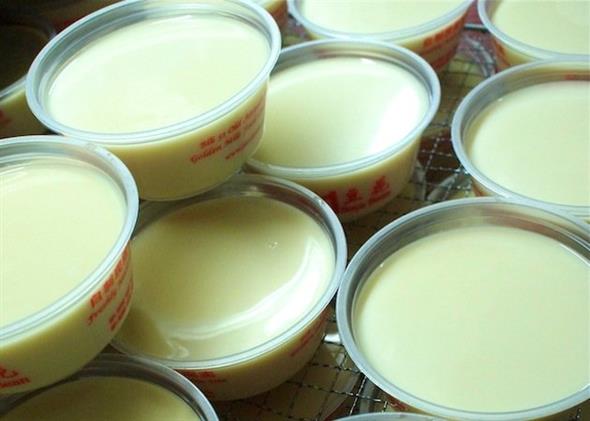
Bean There, Done That
By Hong Xinyi - Wednesday, May 22, 2013
Mr Chang Lee Wong, the man behind the popular 51 Soya Bean chain, used to work as a chef at Pan Pacific hotel. He decided to strike out on his own about 12 years ago when the shadow of pay cuts loomed during an economic lull. He started Wang Wang Crispy Curry Puff at Old Airport Road Food Centre, selling his invention of flaky pastry (the type used for Teochew-style mooncakes) wrapped around curry puff filling.

This background, it turns out, was instrumental to the origins of 51 Soya Bean, which he launched in 2010 with his partner Mr Phua Gek Sia (who also runs the Blanco Court kway chap stall at Old Airport Road Food Centre). The pastry for Mr Chang’s crispy curry puffs are the result of an extremely intricate, labour-intensive proccess that has to be done by hand. This means that there is a limit to the number of curry puffs he can make and sell each day.

Inspired by his neighbour, Lao Ban Soya Beancurd’s introduction of chilled tau huay served in small plastic tubs, as well as his wife’s love for this dessert, Mr Chang began to dabble in making his own modernized version of traditional tau huay. He was in search of a version that was yummier than the competition, and also relatively easy to produce. After three months of experimentations, drawing from lessons learnt while making mango and longan puddings for Pan Pacific, he hit upon a satisfactory formula.
51 Soya Bean’s tau huay utilises a soya bean powder made in China’s Heilongjiang. It’s a fairly common ingredient used in some vegetarian dishes, for example, but Mr Chang believes that he is the first to use it in this particular way. “You can really taste the fragrance of the soya beans in my recipe,” he says, with discernible pride.
He does not use any lactone, a coagulant also known as fruit pectin which is commonly found in traditional tau huay. In addition to sometimes imparting a slight tinge of acidity, some believe that it’s not healthy if too much of lactone ins ingested.
His edge, is the way he gets the mixture to solidify into a silky-smooth, firm yet yielding texture. No secrets are revealed here but, the lack of complicated machinery, a streamlined process, and a recipe that calls for just a few affordable ingredients, facilitated expansion plans. Simple dish, simply made, difficult to copy.
This happened less than a month after the first stall at Old Airport Road Food Centre opened, when it became clear that demand was outpacing supply. Today, there are branches at Tampines Mall, Causeway Point, Ubi Avenue 2, Beach Road, Anchor Point, VivoCity, 313@Somerset, and two more coming up at Loyang and Bedok.
At the height of the chilled tau huay fad, one outlet could sell around 1,500 bowls in a day. Now that number has more or less halved, says Mr Chang. Many chilled tau huay stores that mushroomed in the first flush of this trend have also closed down, although Lao Ban and 51 Soya Bean are still standing. While it’s unlikely that sales will reach the initial dizzying figures, Mr Chang is confident that demand will hold steady rather than crater like it did for bubble tea in the 1990s.
He has been approached with franchise offers, but decided to branch out on his own instead to keep a close eye on quality control. He’s also been approached by a convenience store chain that wanted to stock his products, but it didn’t require enough stock to make it worth the cost of delivery to the different outlets. Mr Chang is, however, toying with the idea of bringing 51 Soya Bean to China – but only the provinces with warmer climates, where chilled tau huay would be a welcome treat.
His advice to budding hawker-entrepreneurs: You must be hardworking, and you should try to offer something unique. The most important thing is to do something you have full mastery of. “I only do something when I am sure that I have mastered the entire process of how to make it, from beginning to end,” he says. “For my curry puffs, I make everything from the dough to the filling. Don’t rely on others to supply you with things to sell. That puts you at a greater risk and it’s harder to make money that way.”
For more advice on becoming a hawker-preneur, join us for a discussion this 3rd and 4th of June at the World Street Food Congress Dialogue where we explore ways to preserve, professionalise and create possibilities through comfort street food.
The World Street Food Congress is the first of its kind in the world to connect all the fractured energies with the aim to address continuity, open up fresh ideas and inspire thought leadership to structure new opportunities for the massive street food culture and industry. For more information, go to wsfcongress.com


